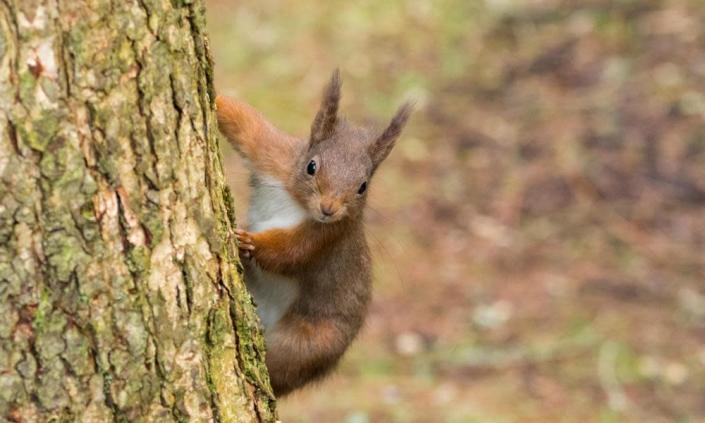 Naturalist and author set up the Fox Study in 1976 which
later became The British Fox Study which still continues work on current foxes
as well as long British fox types. The
Fox Deaths Project is focussed on the City and county of Bristol
and has been yielding unexpected information on disease, etc. Hair gathering from foxes around the UK is taking
place to hopefully submit for a DNA analysis project.
Naturalist and author set up the Fox Study in 1976 which
later became The British Fox Study which still continues work on current foxes
as well as long British fox types. The
Fox Deaths Project is focussed on the City and county of Bristol
and has been yielding unexpected information on disease, etc. Hair gathering from foxes around the UK is taking
place to hopefully submit for a DNA analysis project.
In 2010 the work on foxes, jackals, wolves and coyotes in
the UK
led to the publication of The Red Paper: Canids.
Specialising in canids and felids, Terry has looked at
existing, threatened or extant species particularly from Japan and Hong Kong
and the work has been incorporated into The British Fox Study. He is also credited as observing the first
raccoon dog in Lippe in the 1970s.
In 2021 the British Canid Historical Society was set up to
look at various aspects of foxes.
From 1977 until (officially) 2016 Terry was an exotic
species consultant specialising in felids and advising UK police forces
via the exotic Animals Register (EAR). During this time he contributed to
various technical papers and helped University
of Wales Swansea and its Exotic Cat
Group which presented findings to the Eastern Cougar Foundation Conference on
the evidence regarding large ‘exotic’ cats in the UK.
Papers and Books
1. A
Method For Grading Sightings Of Non-Native Cats: Application to South and West
Wales, UK: Professor Alayne Street-Perrott, Alaric B. Smith Exotic Cat Group University of Wales Swansea and
Terry Hooper-Scharf Exotic Animals Register.
Proceedings
of the 2nd Eastern Cougar Conference, Morgantown, West Virginia,
2004
2. Exotic
Cats In Britain: An Historical Perspective, Professor Alayne Street-Perrott, Alaric B. Smith
Exotic Cat Group University of Wales Swansea and Terry Hooper-Scharf Exotic
Animals Register, Proceedings of the 2nd Eastern Cougar
Conference, Morgantown, West
Virginia, 2004
3.
(Contributor) Survey effort and Sighting Probabilities for
Non-Native Cats in Carmarthenshire, Professor Alayne Street-Perrott, Alaric B. Smith
Exotic Cat Group University of Wales Swansea, Swansea Geographer
2004 vol. 39
4. The
Biography of Perceived Encounters with Pumas and Other Exotic Cats in South and
West Wales, UK;
Alayne Street-Perrott, Alaric B. Smith Exotic Cat Group University of Wales Swansea and
Terry Hooper-Scharf Exotic Animals Register. 2004
5.
Felids: Wildcats, Ferals and Hybrids, Terry Hooper-Scharf. Vale
Wildlife Group, 2000
6. UK National
Wolverine Population and Evidence, Terry Hooper-Scharf, Vale Wildlife
Group, November 2000
7. The
Red Paper: Foxes, Fox-Domestic Dog, Hybrids, Arctic Foxes, Wolves, Jackals and
Coyotes: An Extensive Study of Vulpes vulpes in the United Kingdom and
Releases/Escapes of Non-Native Canids; Terry Hooper-Scharf. Black Tower Books,
2011
8. The
“Girt Dog” of Ennerdale: Hyena, Thylacine or Escaped Exotic Cat: A Naturalist’s
Assessment of the Evidence. Terry Hooper-Scharf. Black Tower Books,
2018
Various
other unlisted papers and articles 2000-2021
Terry
also applied his knowledge of the natural world to look at subjects ranging
from gorillas and other primates as well as 18th -19th centuries
mysterious predators in France,
the UK and Ireland.
The Red
Paper: Canids (2010)
Some Things
Strange & Sinister (2011)
Some More Things
Strange & Sinister (2012)
Pursuing
The Strange & Weird –A Naturalist’s Viewpoint (2014)
Strange &
Mysterious Beasts (2018)
In
2021 Terry set up the UK National Carnivore Advisory to look at all aspects of UK carnivores both
large and small.


















